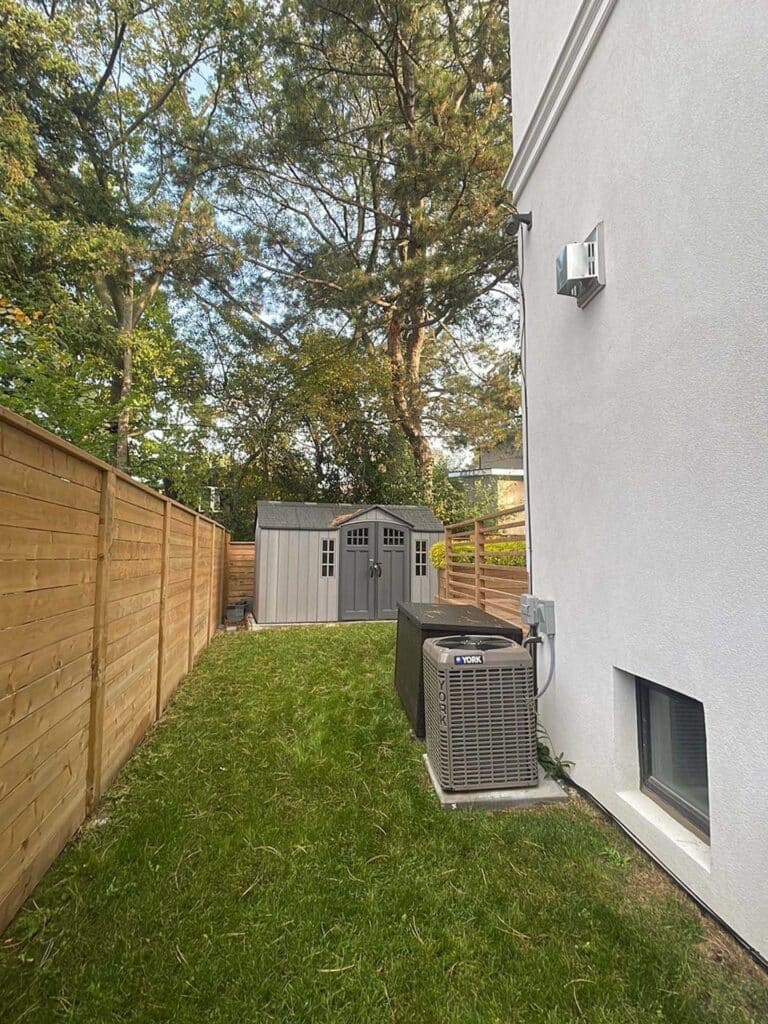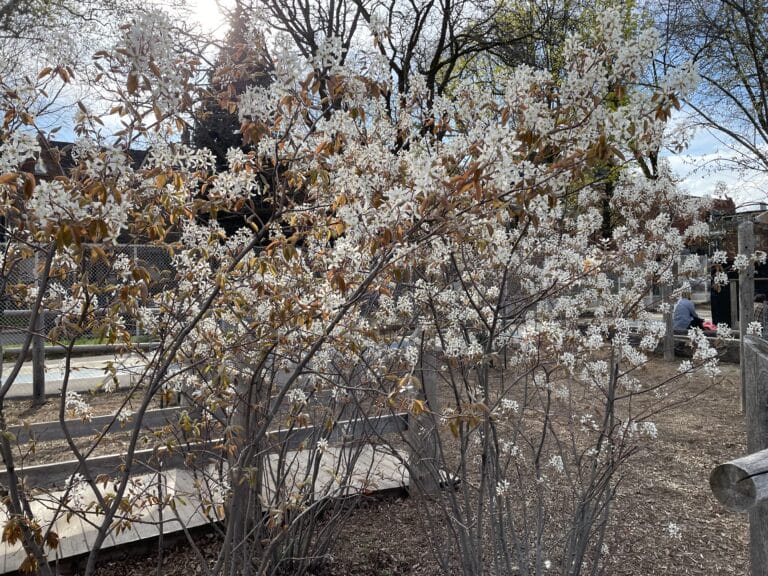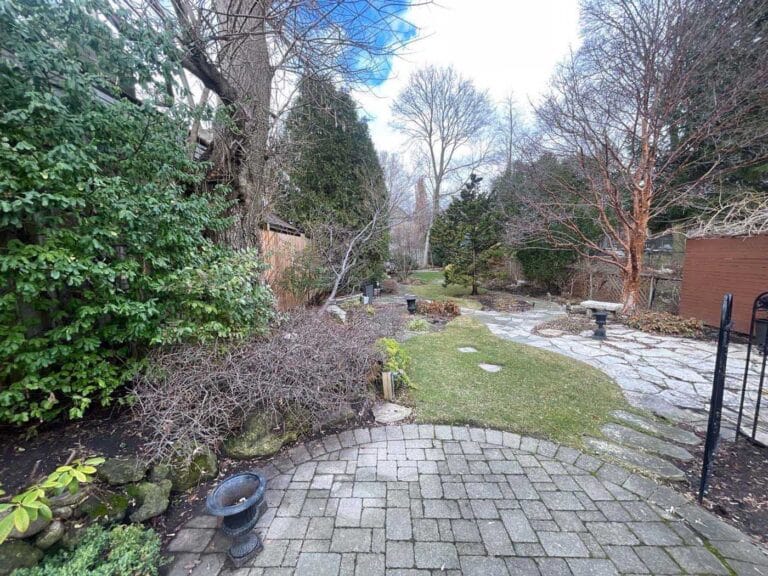
In a small yard, every tree matters. You may only have a single large tree, or several scrawny stems that nonetheless provide shade. And if one tree is causing problems, its impact can be outsized. That’s why it’s extra important to keep on top of tree maintenance if you live on a small property.
Tree Pruning in Small Yards
Because each tree is so important to a small property, pruning can make a dramatic impact. If a tree is large, overgrown branches can easily block most sunlight to the yard during the height of summer, meaning you have to put dreams of sunbathing or a flower garden aside. Clearance pruning can help you get your yard space back, opening up more sunlight to your garden.
The fewer trees you have, the more important it is to stay on top of regular pruning every couple of years. Since your small yard is so affected by each tree, pruning is a real investment in your outdoor space.
Dead or dangerous branches are also extra hazardous in a small space. With nowhere to go, your shed, house, or car might be the likely target if a branch breaks in a storm. There’s little way to avoid a dangerous branch if you’re heavy yard users, or your children or pets are. It’s important to get potential hazards taken care of right away, particularly if your yard is a main access point to the home or parking for cars, bikes, or strollers.
Removing Trees From Small Yards
Small weedy trees can easily take over small yards, whether it’s a volunteer Norway maple or Tree of Heaven. If your yard is small and cluttered or trees straddle fences, sheds or garages, it’s not likely these will ever grow into mature shade trees. Instead, you might end up with a row of stubby little trees that only provide enough shade for a cucumber plant.
Trees like this can be removed without a permit before they grow to a diameter of 30cm at chest height. If the size or number of tiny trees makes it difficult for you to remove them, professional arborists can quickly tackle the problem.
Removing larger trees from small yards can be a job with added complexity. Particularly in yards that lack easy access (access is only through narrow laneways, narrow gates, or even worse, only through a house), the expert manoeuvring and additional time required to get crews and material in and out make for more expensive jobs. If the tree trunk sits on more than one property, having to involve multiple properties can make a small yard tree removal extra complicated.
Small Yards and Neighbour Trees
In crowded downtown lots, your biggest shade tree may not even be in your yard. Or you may have other complex situations, like a trunk that straddles three property lines. When your small yard trees show little regard for the property line, cooperation is essential.
If the tree is in your neighbour’s yard but overhangs yours, you’re allowed to prune the portions over your own property. It’s ideal if you have your neighbour’s permission — they may even want their own pruning done and to share costs — but you’re within your rights to prune over your own property if your neighbour disagrees about what work a tree needs. We always recommend discussing with neighbours first — even if your relationship isn’t the best, surprise tree work is not likely to make it better.
If the tree has a trunk that’s on multiple properties, it’s what the City of Toronto considers a “boundary tree.” That means that for major work like removals, or construction that would affect the tree, all parties need to agree to the work.
Small Yard Root Maintenance
The smaller a space is, the greater the potential is for tree roots to cause issues. These can crop up aboveground or underground and involve yards, concrete (sidewalks, patios, walkways), and pipes, among other possible problems. Mature trees have often been there longer than nearby houses, and their roots may be accustomed to growing where they please.
Never attempt to cut tree roots by yourself — you can easily fatally damage the tree. Arborists may be able to help with excavation for issues with underground roots and can help advise you on options for preserving a tree. If tree removal is required, an arborist can help you select an appropriate tree type for a small space.
Small Tree Types and New Planting
If you have to remove a tree or have a small yard that’s suffering from lack of shade, it’s important to get guidance on planting /replanting the right tree. Trees need to be planted a certain distance from buildings depending on their mature size. This can be hard to accommodate in a smaller yard. An arborist can help you pick the right species to suit your small space, Ontario’s climate, and your personal preferences.
Hedge Planting in Small Spaces
Hedges can also be a great consideration for privacy, greenery, and air quality benefits in a small yard. Taller or shorter, evergreen or flowering species can all provide options to fill in a small space where a typical tree might not work.
Watering Trees in Small Yards
With a small yard, watering your trees is a little easier. There are fewer trees to worry about and less space to haul your hose across. Trees should be watered deeply but not too frequently; biweekly can work for established trees, while newly planted trees may need water between daily and twice a week. Don’t overwater your tree. Soil can easily become compacted on small lots, causing poor drainage. This can lead to pooling water and root rot if a tree becomes overwatered.
Mulching your tree also helps to retain moisture. Adding mulch around the base helps keep the nutrient balance of the soil and regulate temperatures in summer and winter.
Fertilizing Small Yard Trees
Fertilizer can also be beneficial for trees in small yards. Fertilizer helps restore nutrients to the soil. Trees in urban environments aren’t able to get as many essential nutrients like potassium, nitrogen, and phosphorus. In the wild, fallen leaves and dead plants help return these to the soil, but a lack of other trees and quick cleanup of dead leaves mean city trees don’t get enough. In large lots or ravine lots, trees may derive some of the benefits of natural ecosystems.
In small yards, there just aren’t enough other trees and plants, they may be separated by buildings and fences, and compacted soil, or a lack of soil generally, may contribute to low nutrient levels. This makes fertilizing extra beneficial for small yard trees. Fertilize in early spring or late fall.
How to Care for Your Small Yard Trees
With a small space, taking care of your trees really pays off. A dedicated arborist will help ensure trees in your small yard are healthy, pruned well, and the right tree for your space. Time to make a change or investment in your small yard trees? Contact us for an assessment now, or learn more about the best trees for small yards



